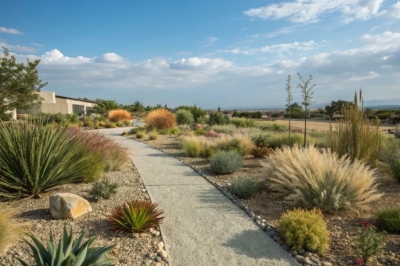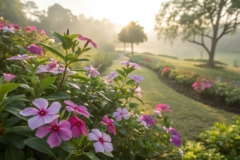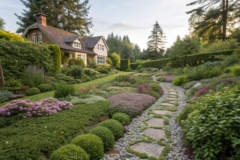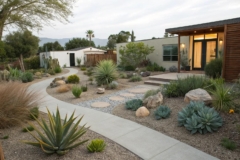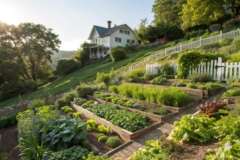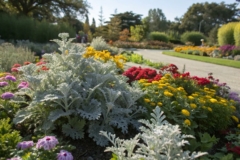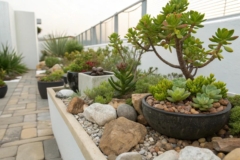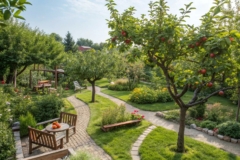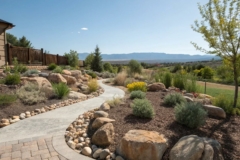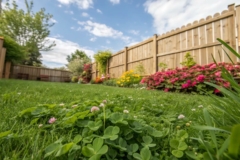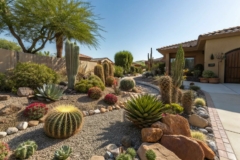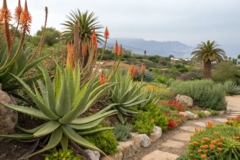1. Decorative Gravel Beds
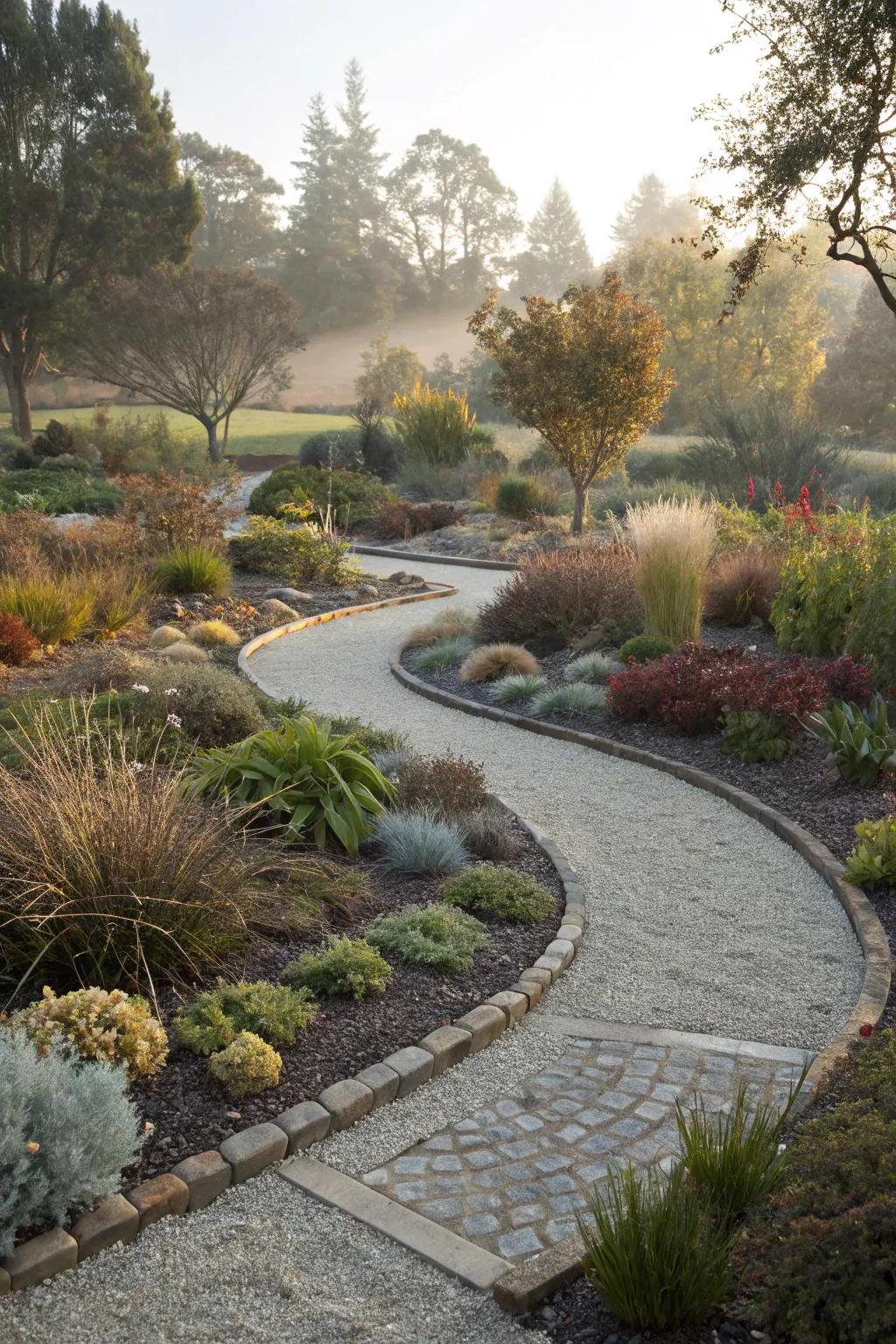
Enhance your garden with gravel beds. They not only conserve water but also provide a clean, modern aesthetic that highlights plant features.
Check if these fit your needs:
- Decorative Garden Gravel: Transform your garden with water-conserving gravel that enhances plant features. Perfect for modern aesthetics.
- Landscape Edging Stones: Define your garden paths with stylish stones, offering structure and elegance to your outdoor space.
- Drought-Tolerant Plants: Incorporate hardy plants that thrive in dry conditions, ensuring a lush garden with minimal watering.
2. Succulent Symphony
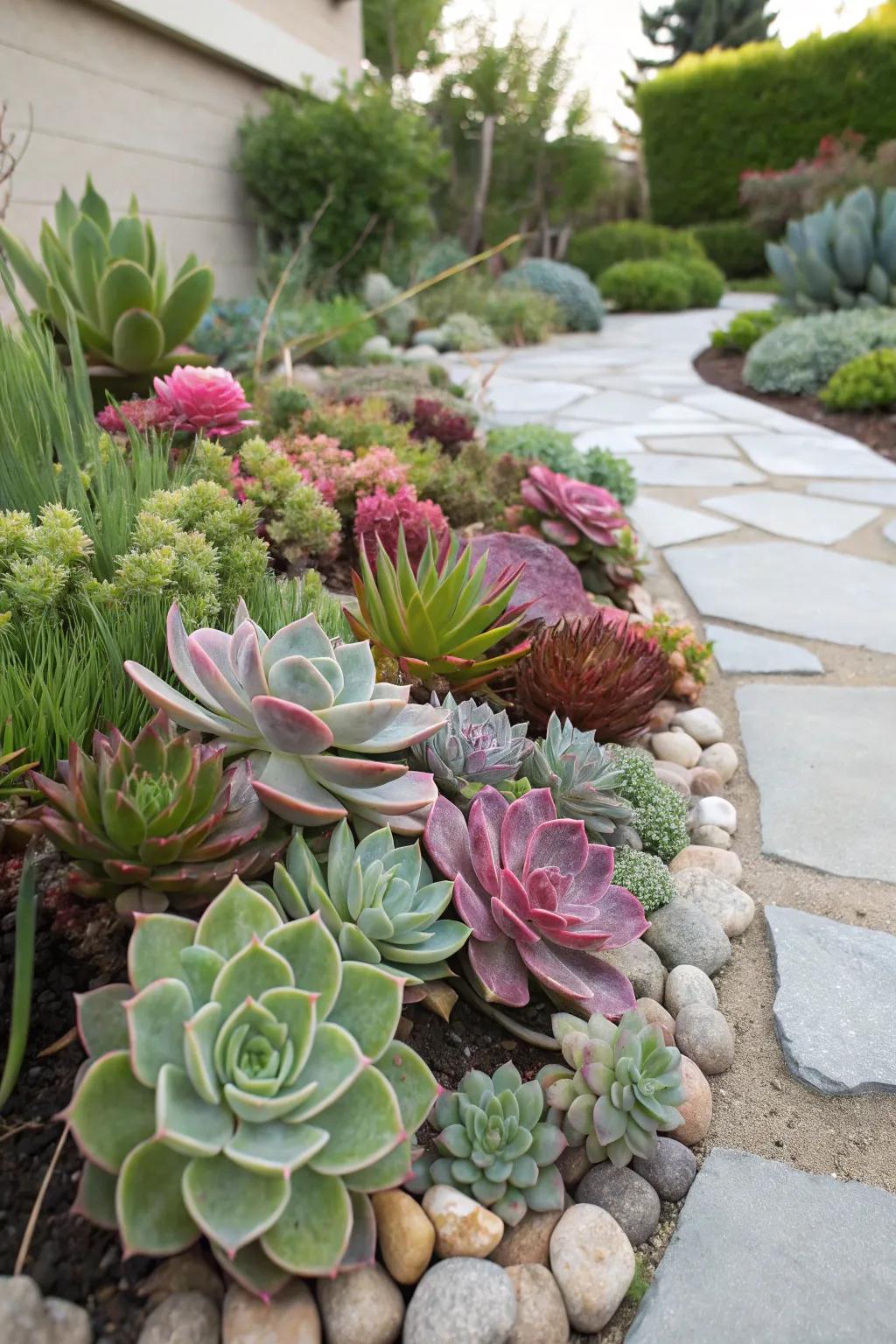
Create a vibrant display with an array of succulents. In my garden, these resilient beauties thrive with little water and offer an array of colors and shapes that never fail to impress.
These products might help:
- Succulent Starter Kits: Jumpstart your succulent garden with a variety of hardy plants perfect for dry conditions.
- Decorative Pebbles: Enhance your succulent display with decorative pebbles for added texture and visual appeal.
- Cactus and Succulent Soil Mix: Ensure optimal drainage for your succulents with a specialized soil mix designed for cacti.
3. Rock Garden Oasis
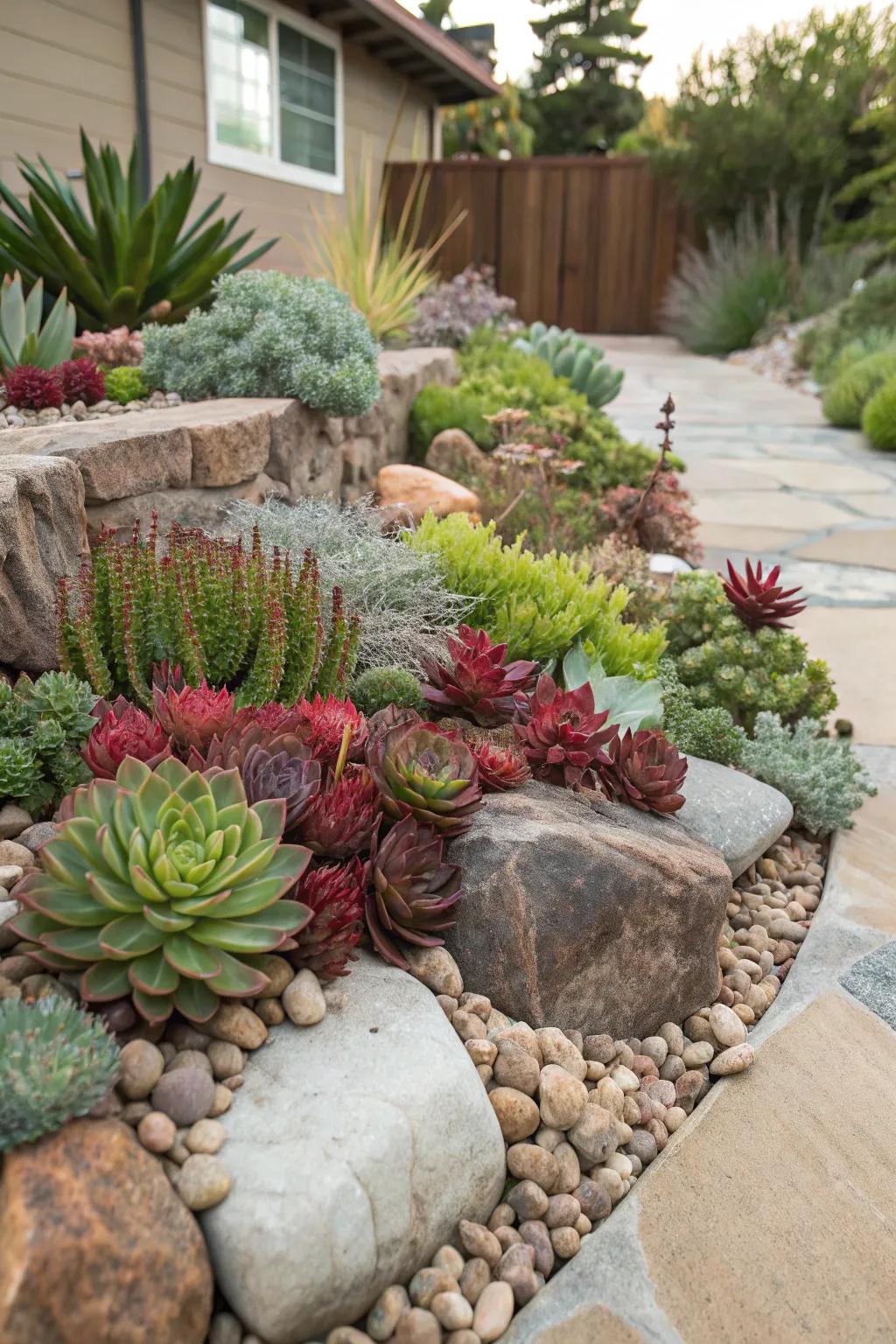
Consider replacing thirsty grass with a rock garden. I’ve found that combining stones with drought-resistant plants like succulents can create a captivating landscape that’s both beautiful and low-maintenance.
A few choices to try:
- Drought-Resistant Succulent Plants Assortment: Enhance your garden with vibrant succulents that thrive in dry conditions and require minimal care.
- Landscape River Rocks: Create a stunning landscape by adding decorative river rocks for natural beauty and easy maintenance.
- Automatic Drip Irrigation Kit for Gardens: Simplify watering with an easy-to-install drip irrigation system, perfect for drought-tolerant gardens.
4. Terraced Slopes
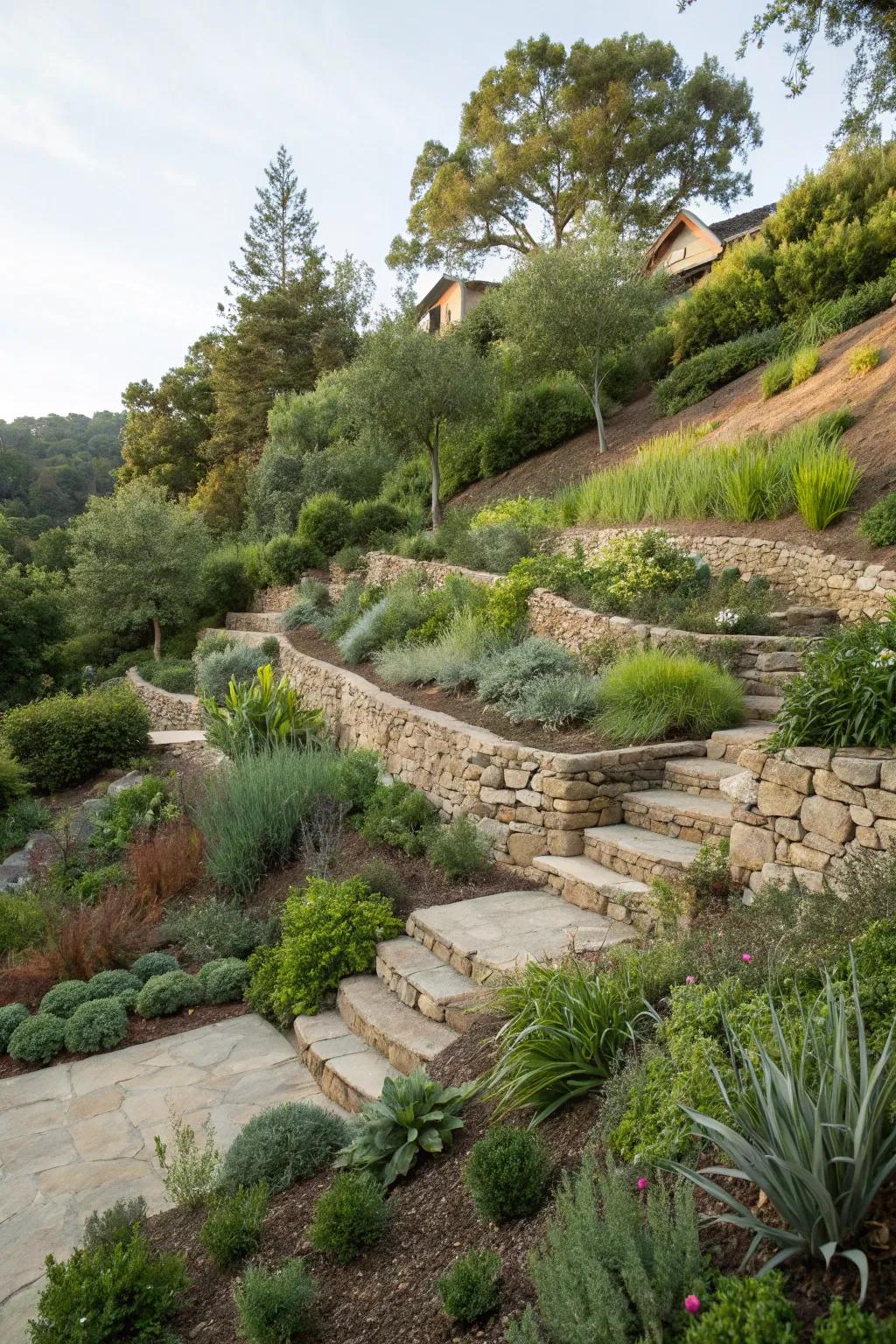
Transform a challenging slope into a terraced garden. This not only reduces soil erosion but also creates stunning levels of planting space for your drought-resistant plants.
Maybe worth checking out:
- Landscape Retaining Wall Blocks: Build beautiful and functional terraced levels with these durable retaining wall blocks.
- Drought-Tolerant Plant Seeds: Plant a variety of drought-resistant flora perfect for thriving in terraced garden spaces.
- Garden Landscape Fabric: Use landscape fabric to prevent weed growth and enhance soil stability on terraced gardens.
5. Mediterranean Magic
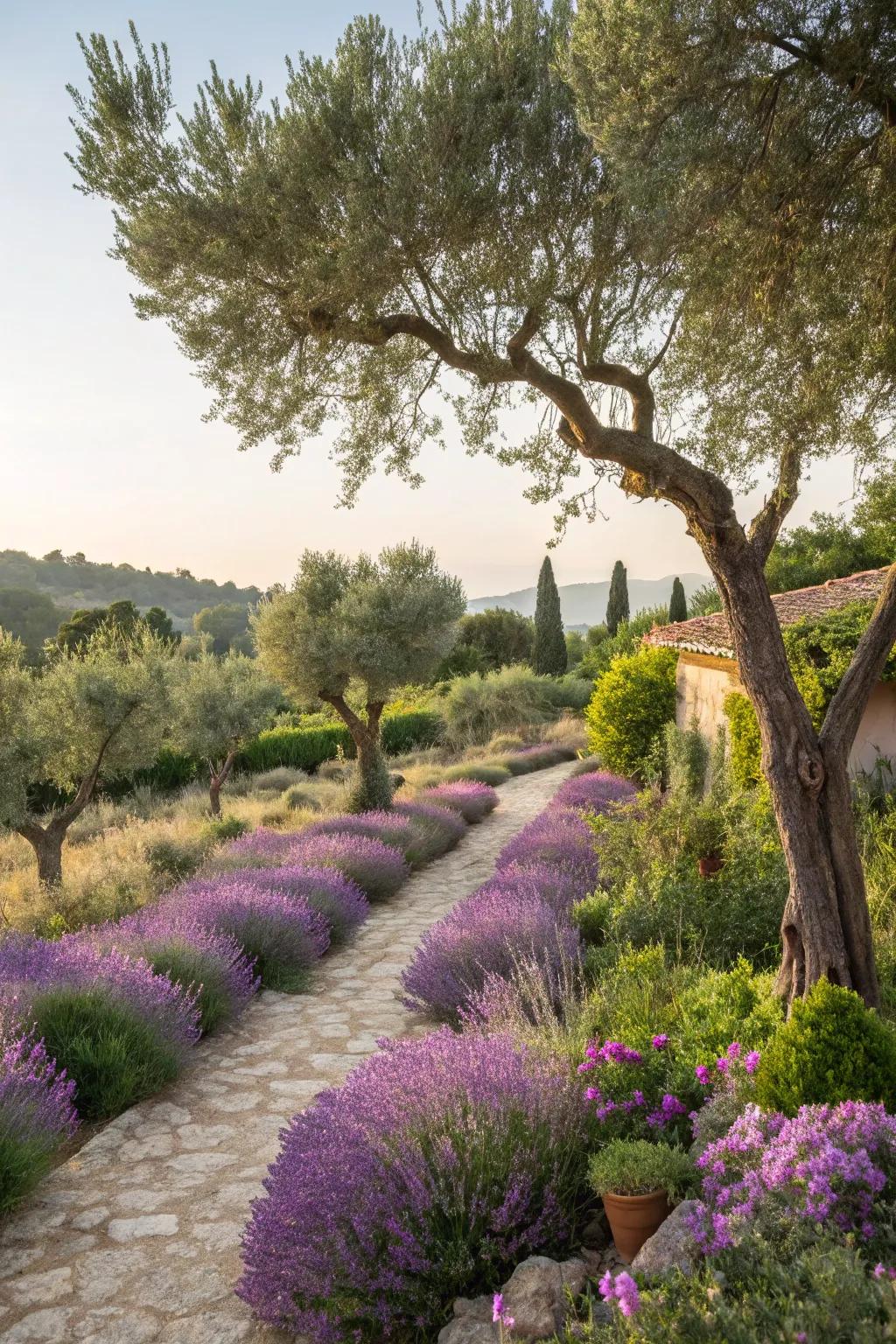
Create a Mediterranean-inspired garden with lavender and olive trees. These plants thrive in dry conditions and will transport you to a sun-soaked paradise every time you step outside.
Might be a good match:
- Lavender Seed Pack: Grow beautiful lavender to bring calming fragrance and color to your Mediterranean garden.
- Olive Tree Starter Kit: Cultivate your own olive trees, ideal for creating a serene Mediterranean atmosphere.
- Mediterranean Garden Soil Mix: Enhance your garden’s health with nutrient-rich soil, perfect for lavender and olive trees.
6. Water-Wise Hardscaping
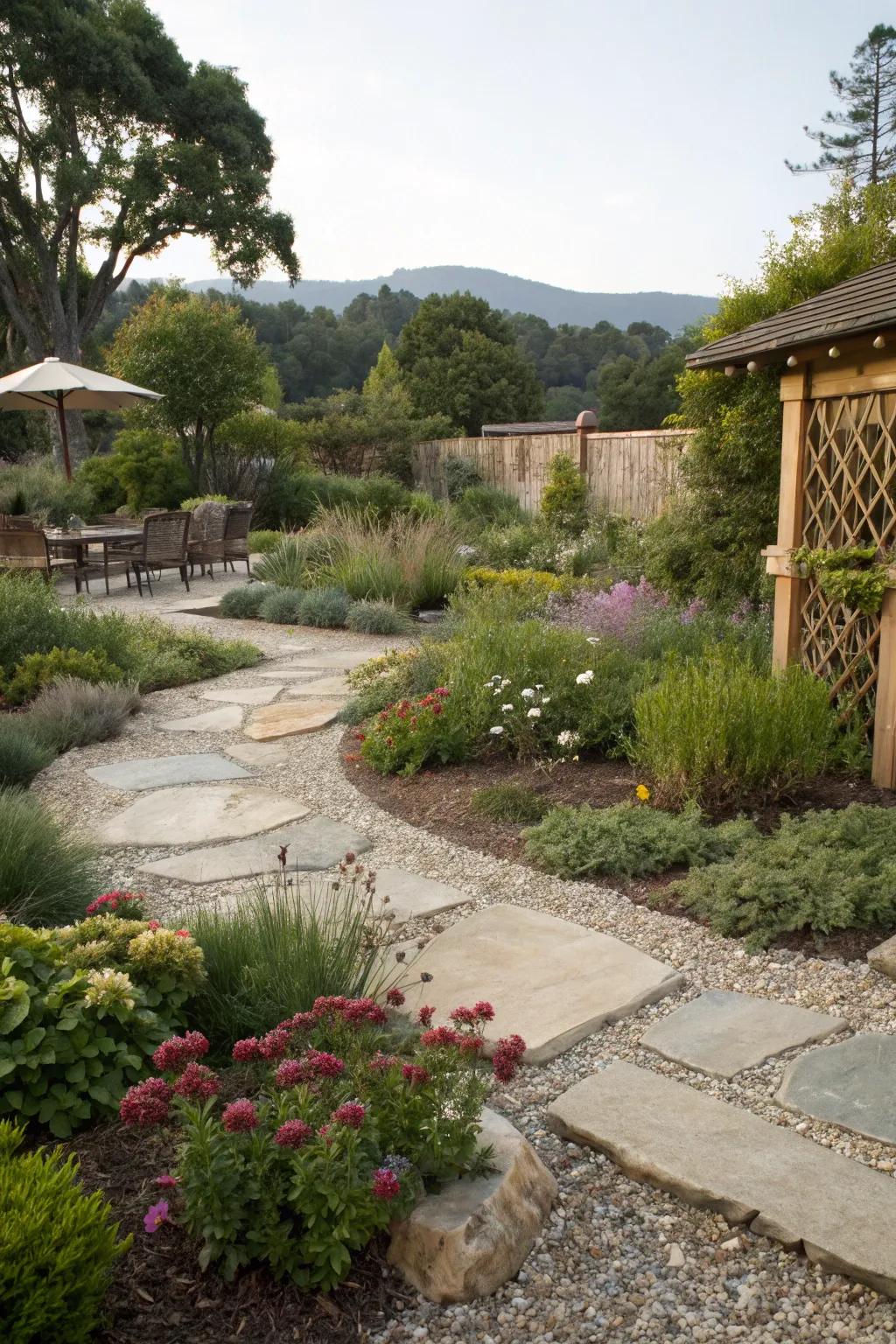
Integrate hardscaping elements like gravel pathways and stone patios. These features not only conserve water but also add structure and charm to your outdoor space.
Try these:
- Decorative Gravel for Pathways: Enhance your garden’s charm with decorative gravel, conserving water elegantly and effectively.
- Natural Stone Pavers: Create stunning patios with natural stone pavers, adding beauty and durability to your space.
- Garden Trellis for Climbing Plants: Introduce vertical interest and support drought-tolerant climbers with an elegant garden trellis.
7. Colorful Cacti Display
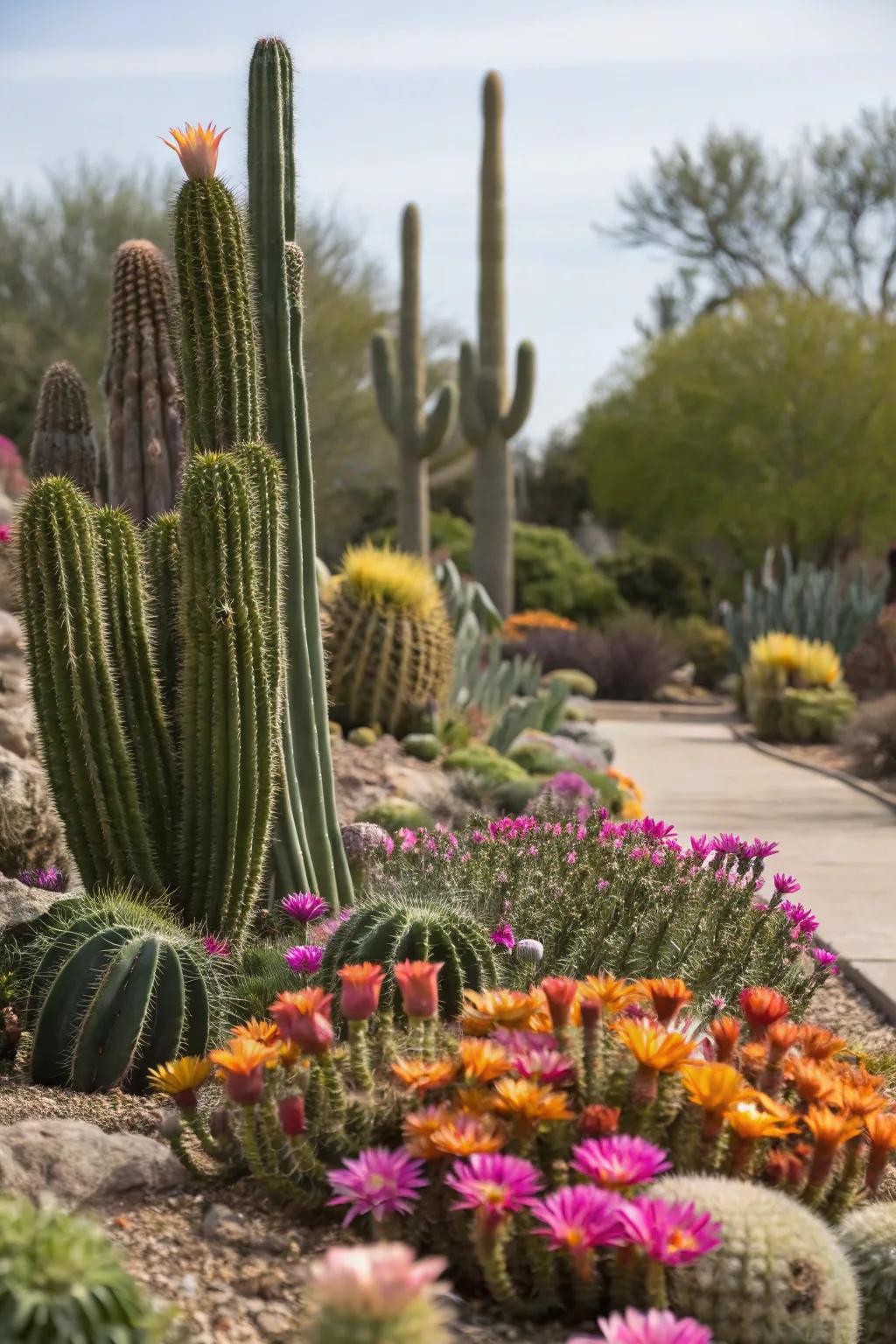
Add a striking visual element with a cacti garden. These hardy plants are perfect for dry climates, and their unique shapes and vibrant blooms make them a standout feature.
A few things you might like:
- Cactus and Succulent Potting Soil: Ensure your cacti thrive with nutrient-rich potting soil designed for arid conditions. Enhance growth now!
- Decorative Planters for Cacti: Showcase your cacti beautifully with stylish planters that complement their unique shapes. Shop today!
- Outdoor Cactus Fertilizer: Boost your cacti’s health and blooms with specialized outdoor cactus fertilizer. Nourish your garden!
8. Potted Perfection
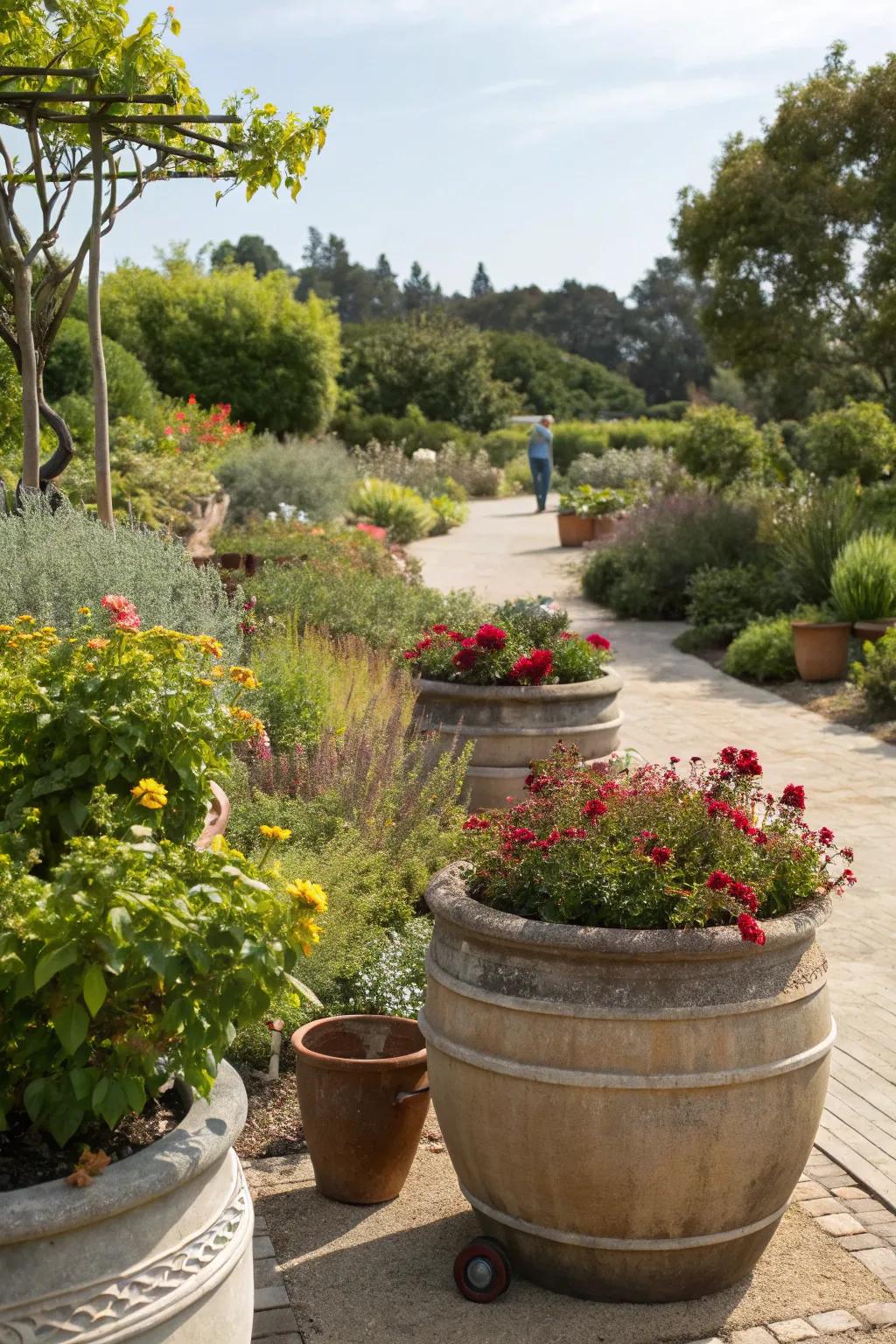
Use large containers to grow drought-tolerant plants. Larger pots hold more soil and moisture, reducing the frequency of watering needed.
Explore these options:
- Large Plant Containers: Elevate your garden with large containers; they retain more moisture, reducing watering frequency.
- High-Quality Potting Soil: Ensure your drought-tolerant plants thrive with nutrient-rich potting soil for optimal growth.
- Self-Watering Planters: Simplify plant care with self-watering planters, perfect for busy lifestyles and water conservation.
9. Zen Garden Serenity
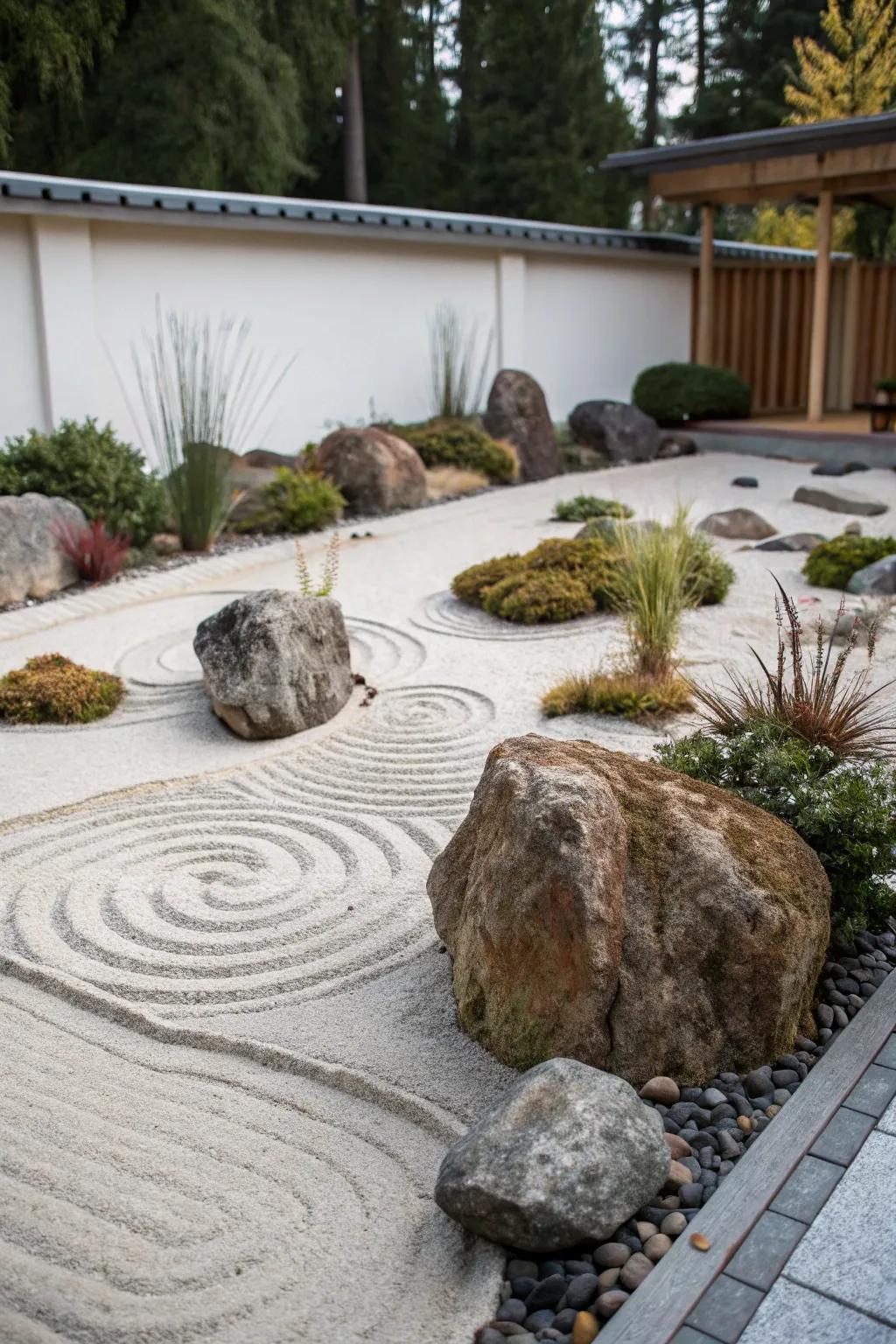
Create a Zen garden with sand, rocks, and minimal plants. This minimalist approach not only conserves water but also offers a peaceful retreat.
A few helpful options:
- Zen Garden Sand: Enhance tranquility with fine, white sand for crafting calming patterns in your Zen garden.
- Smooth River Rocks: Add elegance with smooth river rocks, perfect for enhancing the natural look of your garden.
- Zen Rake Set: Create perfect lines and swirls with a high-quality rake set tailored for Zen gardens.
10. Ornamental Grass Elegance
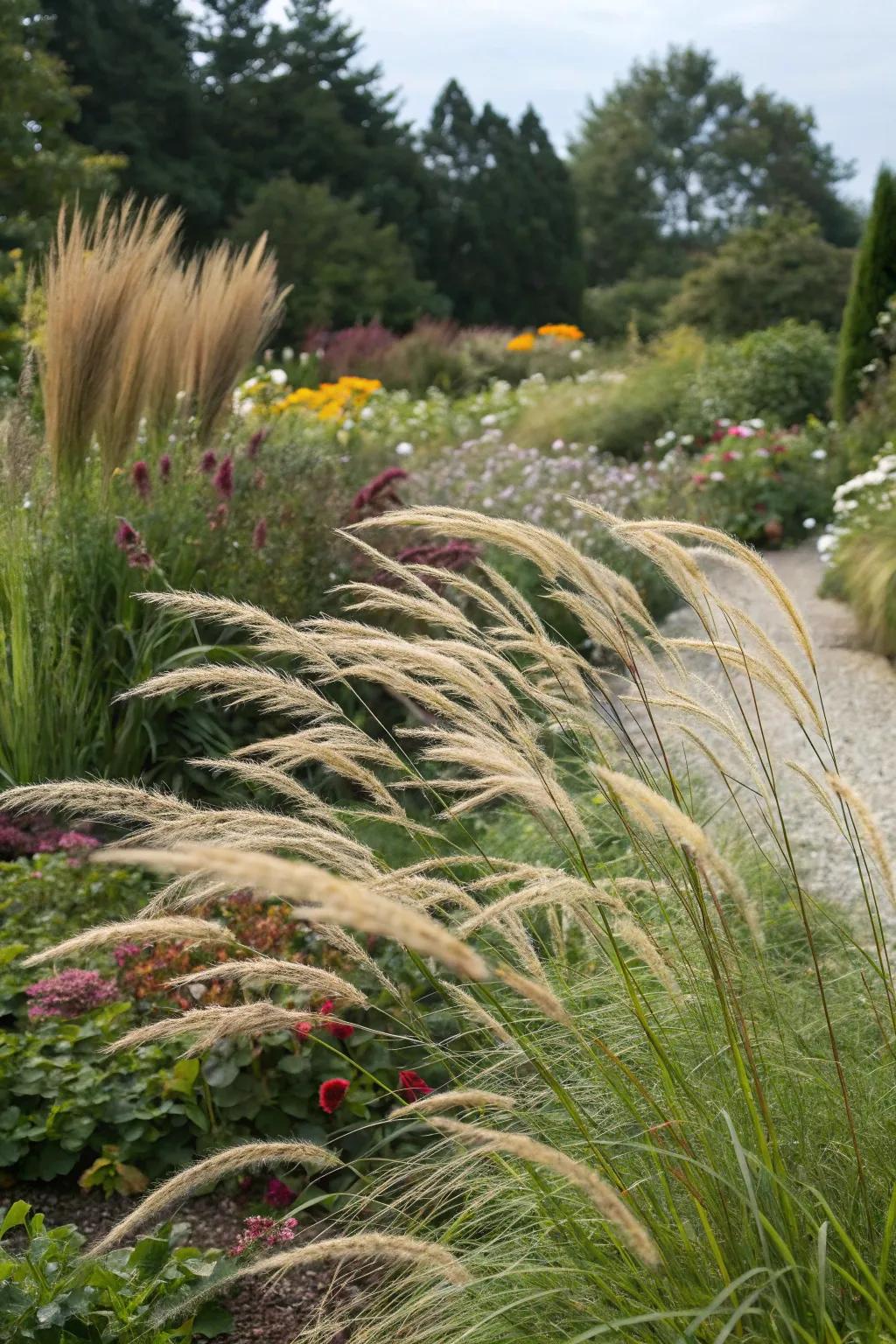
Incorporate ornamental grasses for a touch of elegance. These grasses sway gracefully in the wind and are incredibly drought-resistant, adding movement and texture to your garden.
Useful items to consider:
- Pampas Grass Seeds: Add height and movement to your garden with these graceful, drought-tolerant grasses.
- Fountain Grass Seeds: Grow elegant, flowing grasses that bring texture and style to any garden setting.
- Blue Fescue Grass Plants: Introduce year-round color and drought resistance with these striking, bluish ornamental grasses.
11. Native Plant Haven
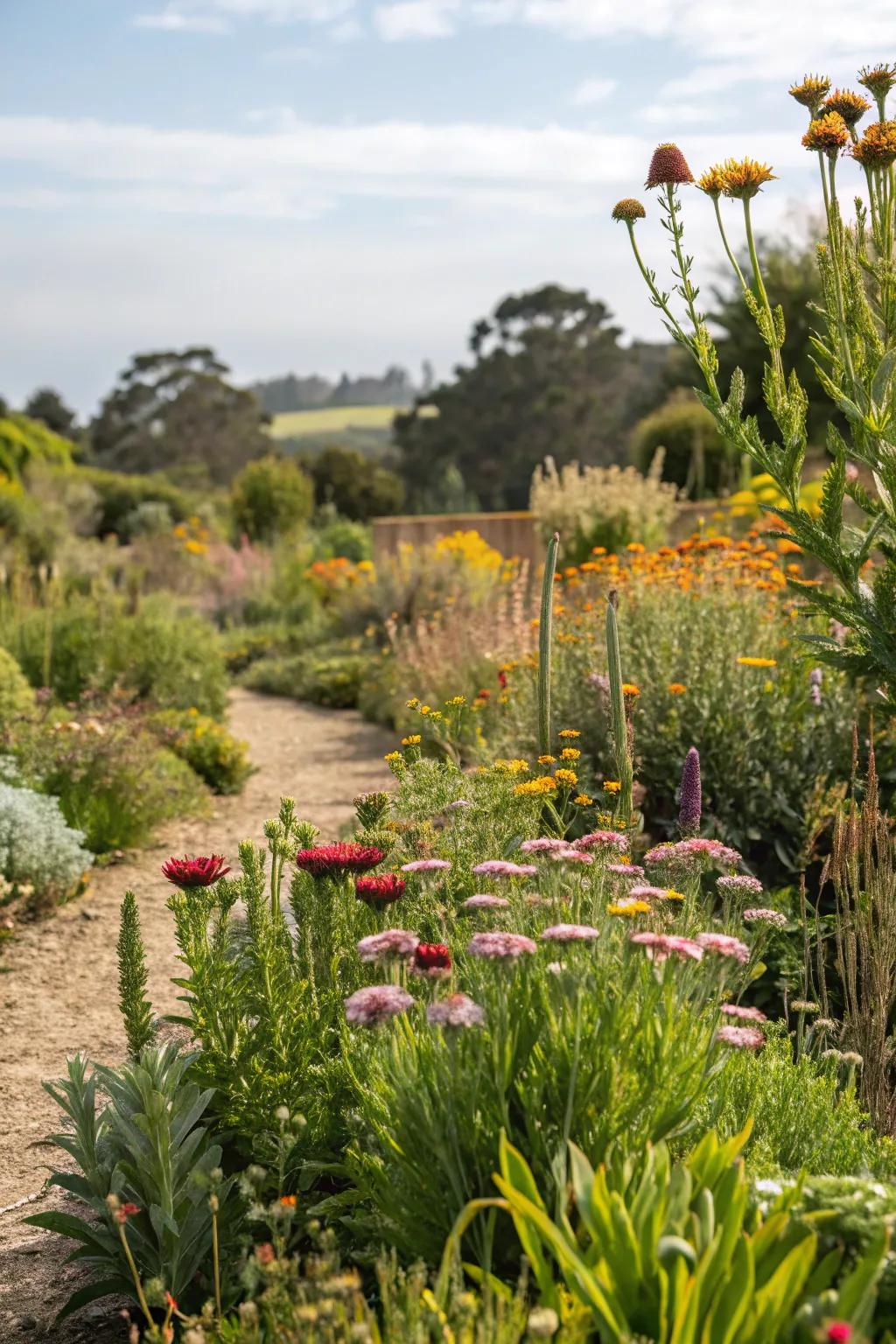
Embrace your local environment by planting native species. These plants are naturally adapted to your climate and require less water, making them perfect for a sustainable garden.
Products that could assist:
- Native Plant Seeds Collection: Start your sustainable garden with these native seeds, perfect for low-maintenance landscaping.
- Drought Tolerant Plant Fertilizer: Enhance your native garden with this fertilizer, designed for low-water plants.
- Eco-friendly Garden Mulch: Retain moisture in your native plant garden with this sustainable, eco-friendly mulch.
12. Mulch for Moisture Retention
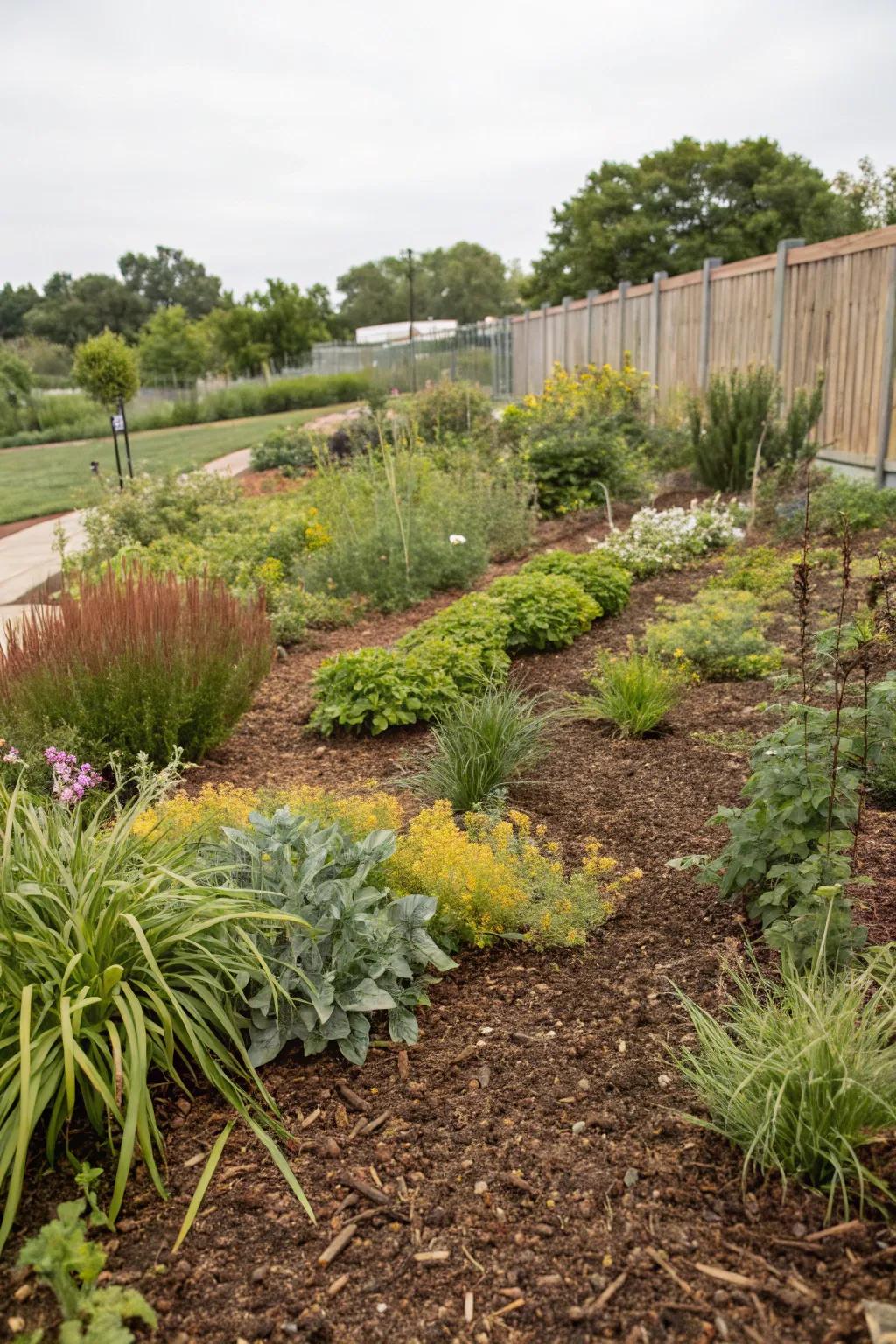
Use mulch around your plants to retain moisture and suppress weeds. I’ve found that a good layer of mulch can make a big difference in preserving soil moisture.
Some ideas to consider:
- Organic Hardwood Mulch: Enhance your garden’s moisture retention and aesthetics with natural, organic hardwood mulch.
- Cedar Wood Chips: Protect plant roots and maintain soil moisture with aromatic cedar wood chips.
- Coconut Coir Mulch: Opt for sustainable coconut coir mulch to enrich soil and suppress unwanted weeds.
13. Colorful Groundcovers
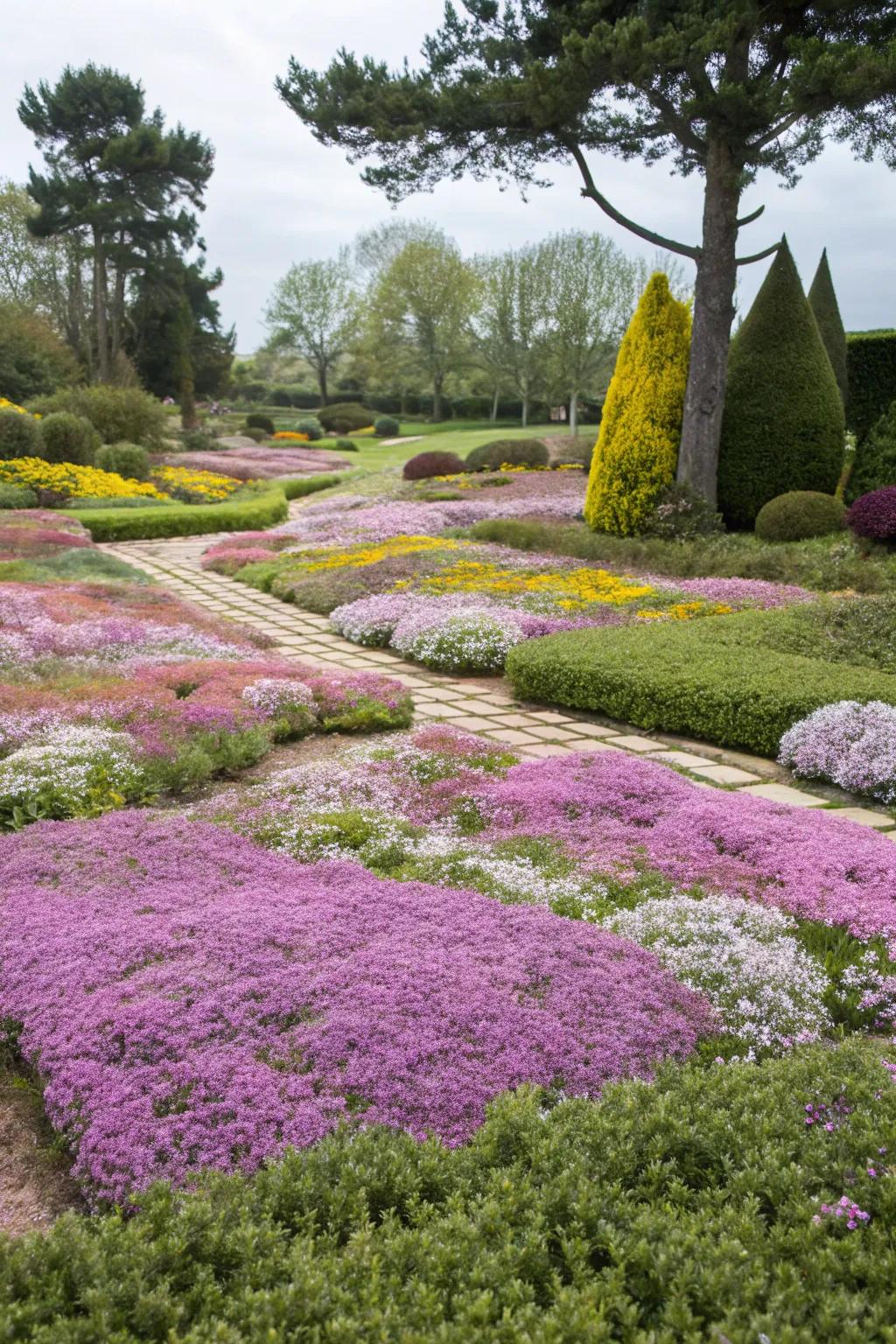
Plant colorful groundcovers like creeping thyme. These low-growing plants cover the soil, reduce evaporation, and add a pop of color.
Items that may come in handy:
- Creeping Thyme Seeds: Enhance your garden with vibrant creeping thyme seeds, perfect for drought-resistant ground cover.
- Drought Tolerant Groundcover Plant Set: Explore a variety of drought-tolerant groundcovers to beautify your garden with minimal water use.
- Organic Plant Fertilizer: Boost your groundcover growth with organic fertilizer, ensuring a lush, colorful garden.
14. Artistic Water Features
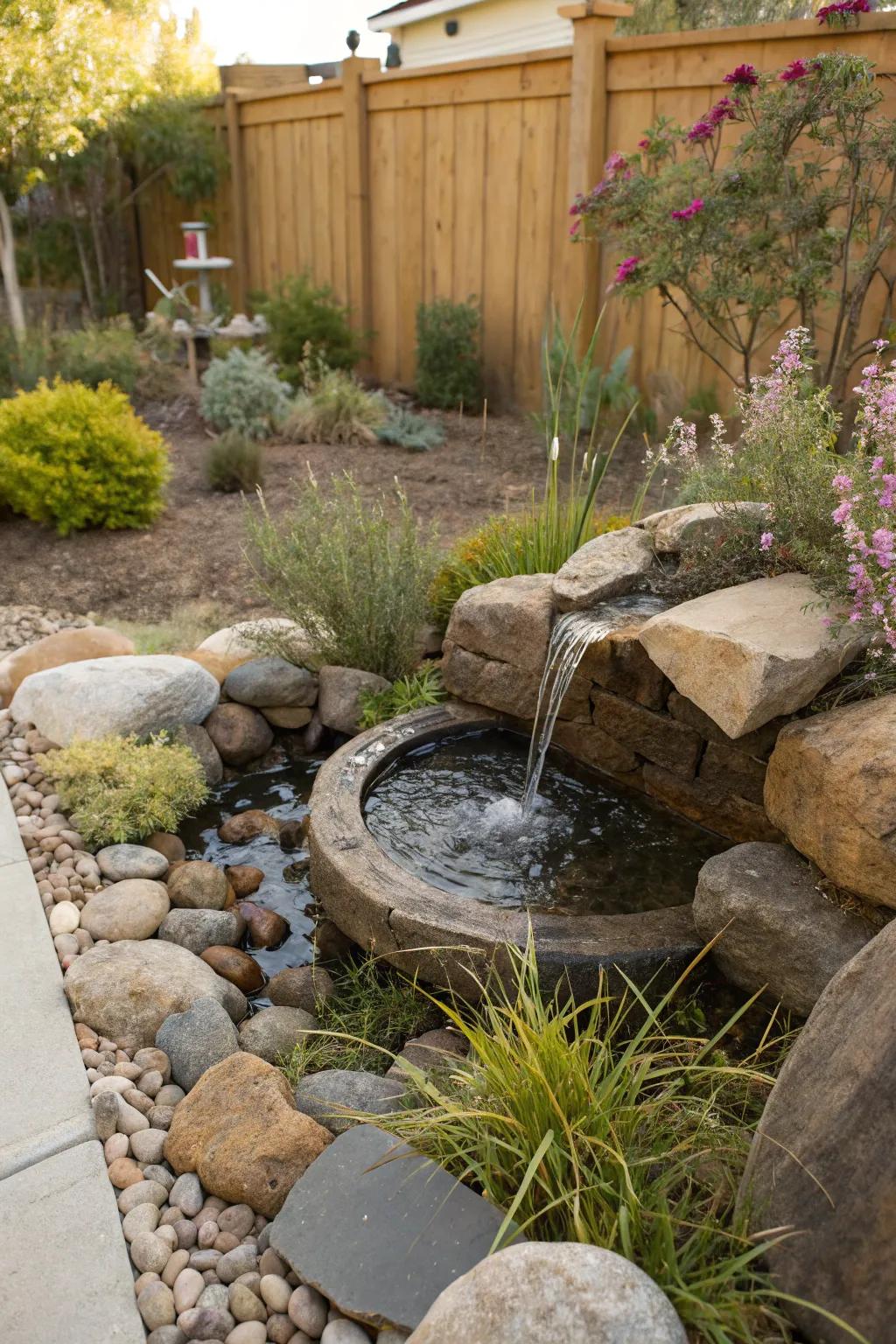
Incorporate a water feature that recycles water. Even with limited water, a small fountain can add a soothing sound and focal point to your garden.
Give these a look:
- Solar-Powered Water Fountain Pump: Enhance your garden with a solar-powered fountain that saves energy and conserves water effortlessly.
- Self-Contained Garden Water Feature Kit: Create a tranquil oasis with an easy-to-install kit that recycles water efficiently.
- Waterfall Spillway with Basin: Introduce soothing sounds with a waterfall spillway that recirculates water in your garden.
15. Rainwater Harvesting
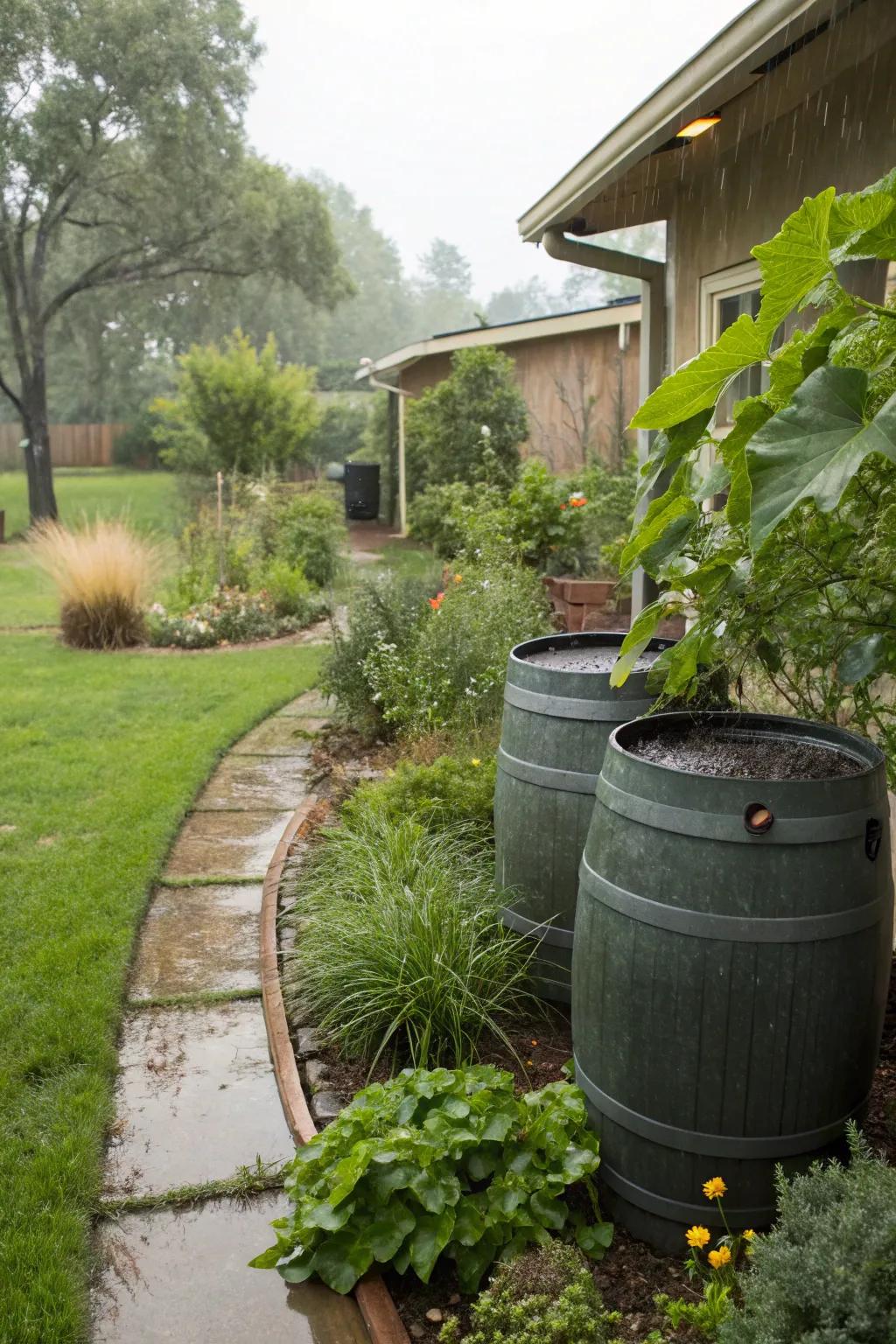
Install a rainwater collection system to make the most of every drop. In my garden, this simple addition has significantly reduced our reliance on municipal water supplies.
These products might be useful:
- Rain Barrel: Collect and store rainwater efficiently with a durable rain barrel. Easy to set up and use.
- Rainwater Diverter Kit: Direct water flow effortlessly with a rainwater diverter kit. Enhance your rain collection system.
- Watering Can: Easily water your garden using collected rainwater with a sturdy watering can.
16. Vertical Gardens
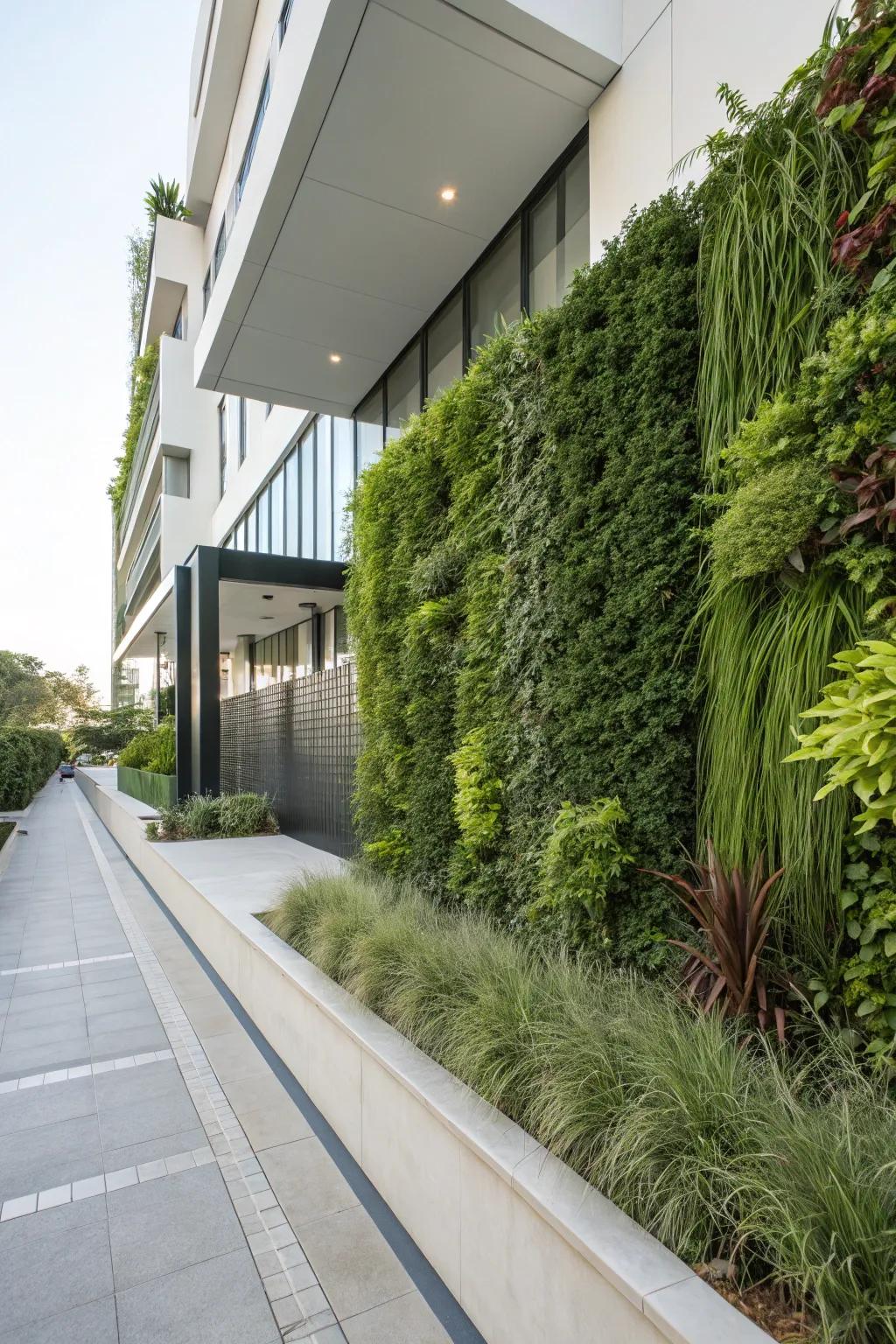
Make use of vertical space with a living wall. By planting drought-tolerant plants vertically, you can add greenery without needing extra ground space.
May just do the trick:
- Vertical Garden Planter Kit: Transform your wall into a lush garden with this easy-to-install vertical planter kit.
- Self-Watering Wall Planters: Reduce maintenance with self-watering planters designed for lush, thriving vertical gardens.
- Drought-Tolerant Plant Seeds Pack: Plant a resilient living wall with this versatile pack of drought-tolerant plant seeds.
17. Shade with Pergolas
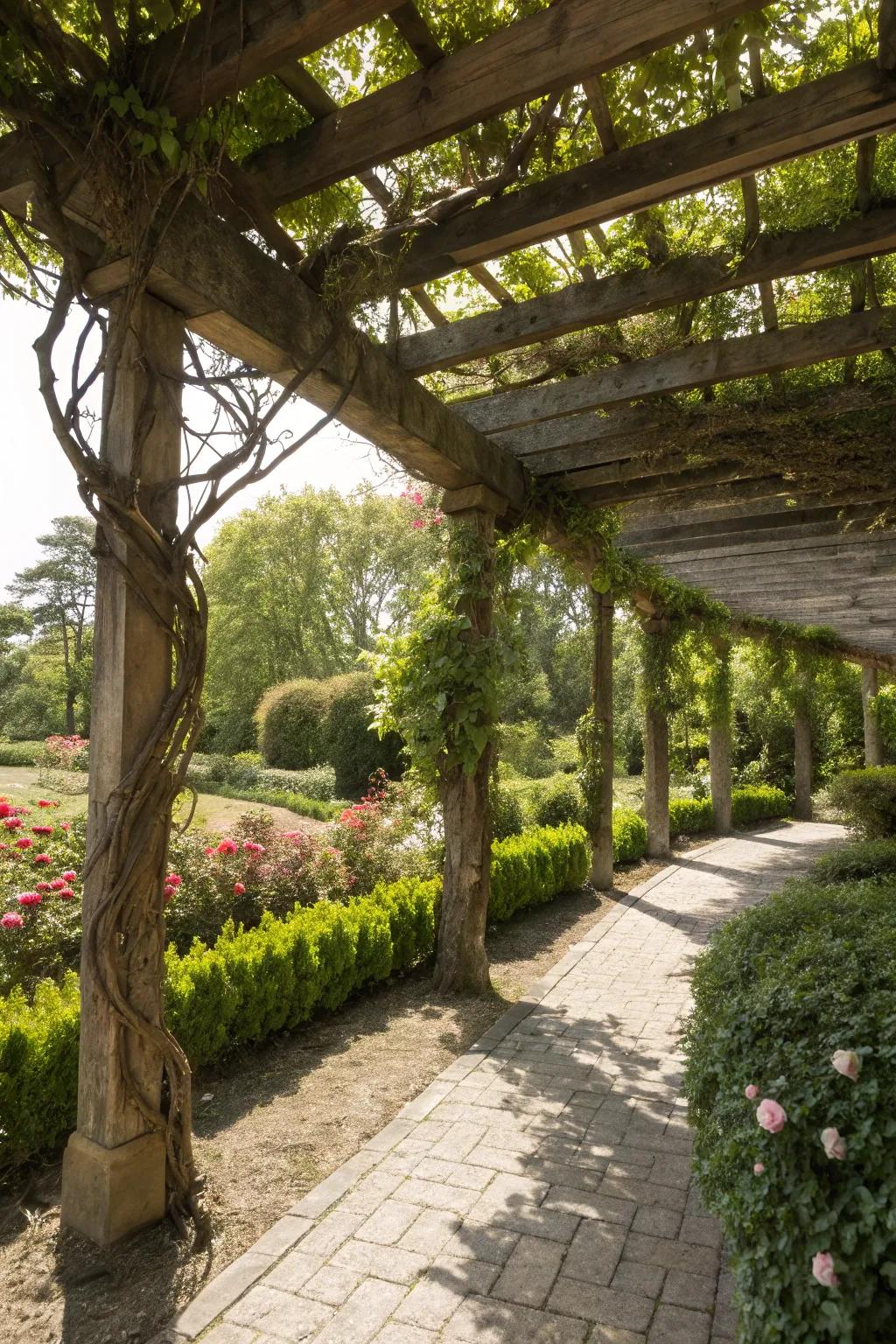
Add a pergola for shade and style. In my garden, a pergola not only provides relief from the sun but also serves as a support for climbing drought-tolerant vines.
A few relevant products:
- Wooden Pergola Kit: Transform your garden with this elegant wooden pergola, adding charm and essential shade.
- Climbing Plant Support Net: Enhance your pergola’s beauty by installing a support net for your climbing plants.
- Outdoor LED String Lights: Create a magical atmosphere under your pergola with energy-efficient outdoor LED string lights.
18. Edible Drought-Tolerant Plants
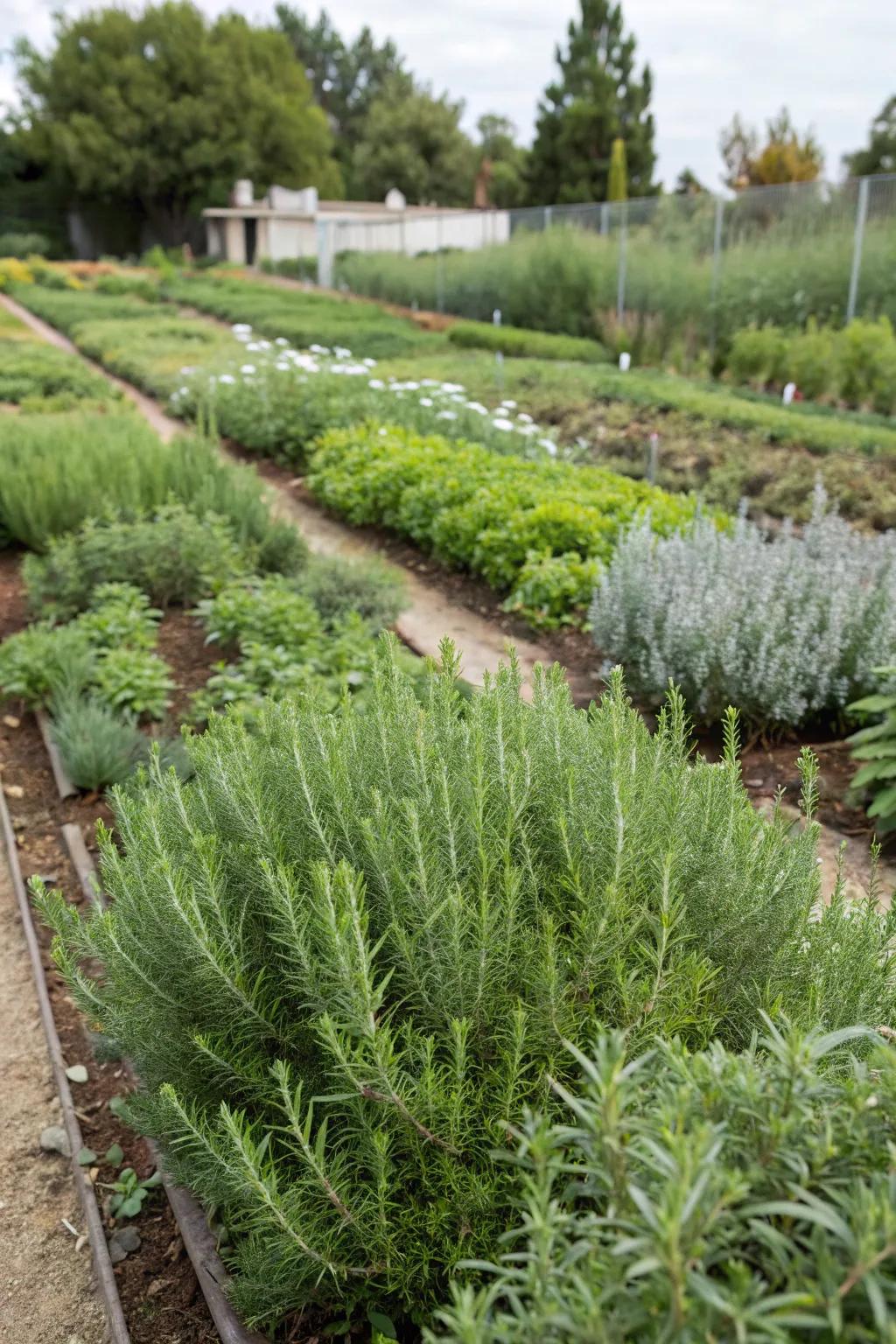
Grow edible plants like rosemary and thyme that thrive in dry conditions. These herbs not only save water but also spice up your cooking!
Possibly helpful picks:
- Organic Rosemary Seeds: Grow your own rosemary easily at home; perfect for flavoring dishes and saving water!
- Thyme Herb Garden Kit: Start a thyme herb garden effortlessly and enjoy fresh herbs in your culinary creations.
- Self-Watering Planters: Keep your drought-tolerant plants thriving with minimal effort using self-watering planters.
19. Drip Irrigation System
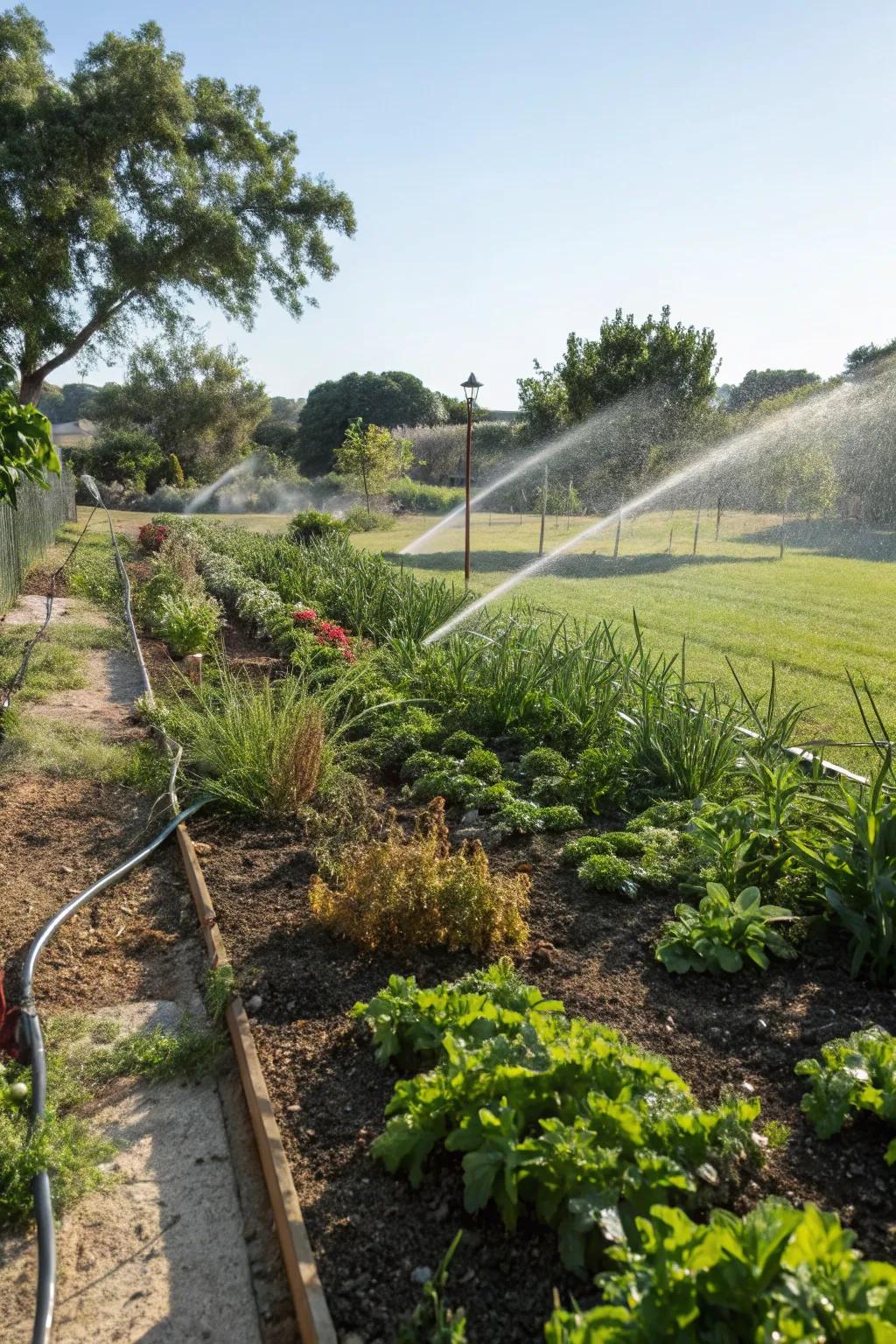
Install a drip irrigation system to target water directly to plant roots. This efficient system has made a huge difference in my garden’s water usage.
Possibly handy products:
- Complete Drip Irrigation Kit: Simplify your garden watering with a complete drip irrigation kit tailored for beginners and pros.
- Adjustable Drip Emitters: Adjust water flow to each plant’s needs with versatile drip emitters for your irrigation system.
- Irrigation Tubing Roll: Ensure robust water delivery with high-quality irrigation tubing for effective garden hydration.
20. Wildflower Wonderland
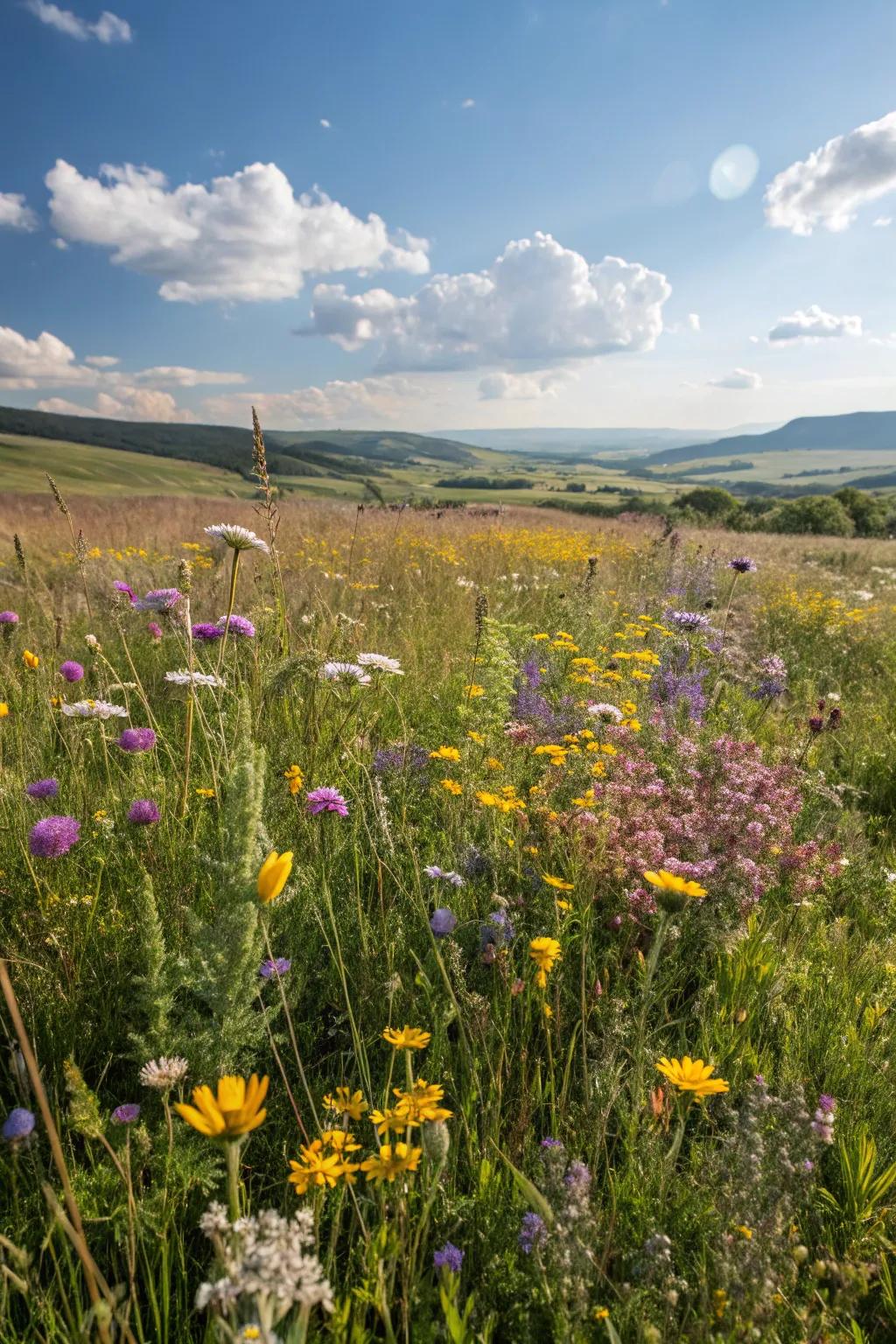
Create a wildflower meadow with drought-tolerant species. These blooms bring color and attract pollinators, adding life and movement to your garden.
You might give these a try:
- Drought-Tolerant Wildflower Seed Mix: Sow this seed mix to create a vibrant meadow that attracts pollinators effortlessly.
- Bee and Butterfly Habitat Kit: Install this habitat kit to encourage bees and butterflies to flutter around your garden.
- Drip Irrigation System for Gardens: Set up this irrigation system to maintain your wildflower meadow with minimal water use.
